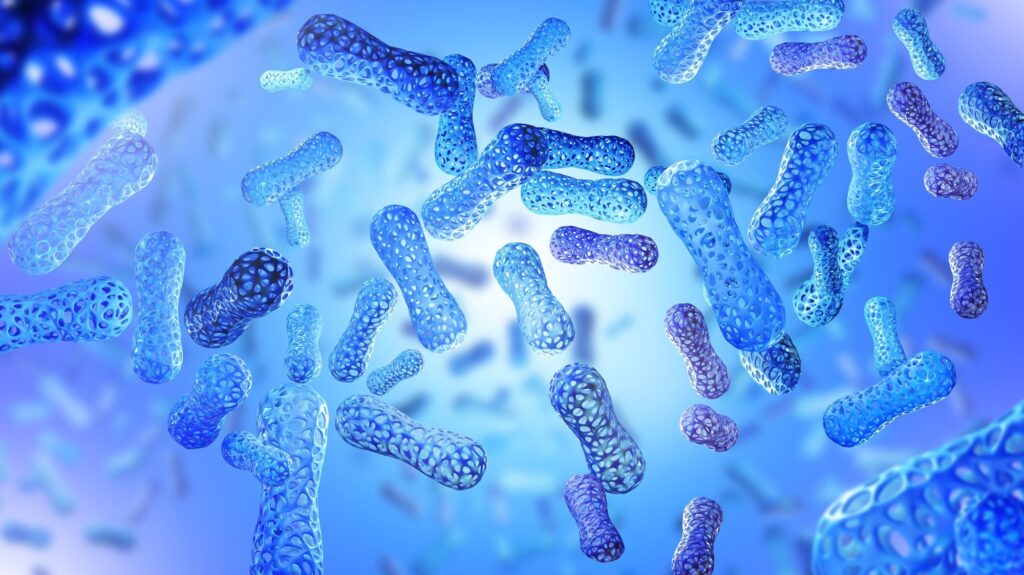In a current examine revealed in eBioMedicine, researchers investigated whether or not probiotic supplementation with Lactobacillus acidophilus may assist forestall non-alcoholic fatty liver disease-associated hepatocellular carcinoma (NAFLD-HCC) growth utilizing tumourigenesis mouse fashions.
Examine: Lactobacillus acidophilus suppresses non-alcoholic fatty liver disease-associated hepatocellular carcinoma by means of producing valeric acid. Picture Credit score: FOTOGRIN/Shutterstock.com
Background
The worldwide incidence of NAFLD-HCC is rising, however no preventive measures in opposition to it are at the moment out there.
Given rising proof of its shut correlation with intestine microbial dysbiosis, researchers have begun to pursue research investigating the prophylactic potential of probiotics, corresponding to L. acidophilus, in opposition to NAFLD-HCC.
In people, the mutual interaction between the liver and gut by means of the portal vein circulation will get dysregulated throughout hepatocarcinogenesis or HCC, which enriches pathobionts in NAFLD-HCC sufferers and depletes their commensal probiotics, together with Lactobacillus and Bifidobacterium.
L. acidophilus has been extensively commercialized as an oral complement in opposition to a number of illnesses, corresponding to lactose intolerance and colitis, to call a couple of.
Earlier research with human topics have even hinted at its feasibility in opposition to NAFLD and non-alcoholic steatohepatitis (NASH). Nevertheless, its anti-tumourigenic results in opposition to liver malignancies stay largely unknown.
In regards to the examine
Within the current examine, researchers used NAFLD-HCC mouse fashions to analyze the anti-tumourigenic results of L. acidophilus.
They developed NAFLD-HCC tumorigenesis in each standard and germ-free mice by diethylnitrosamine (DEN) injection and feeding a high-fat-high-cholesterol (HFHC) or choline-deficient high-fat (CDHF) food regimen.
After every day administration of L. acidophilus or phosphate buffer saline (PBS) management for 28 weeks, the crew sacrificed all HFHC-fed NAFLD-HCC mice and noticed whether or not they had macroscopic tumors within the liver.
Additional, they carried out fecal metagenomic sequencing to guage the influence of L. acidophilus on the intestine microbiota. Germ-free mice, given 34 weeks of therapy, helped testify to the only helpful impact of L. acidophilus.
The crew additionally developed an orthotopic NAFLD-HCC allograft mannequin by intrahepatic injection of murine HCC cells in standard mice fed with an HFHC food regimen that helped additional validate the helpful impact of L. acidophilus therapy.
The crew investigated the organic capabilities of L. acidophilus conditional medium (L.a CM) and metabolites in NAFLD-HCC human cells and mouse organoids.
Lastly, they carried out metabolomic profiling utilizing liquid chromatography-mass spectrometry (LC-MS) to determine the useful metabolite of L. acidophilus.
Outcomes
Within the tumourigenesis mouse mannequin, i.e., mice with NAFLD-HCC, L. acidophilus was among the many prime depleted species, suggesting its attainable protecting, anti-tumorogenic impact in opposition to NAFLD-HCC.
Fecal metagenomic sequencing outcomes confirmed no variations in α- and β-diversity between L. acidophilus-treated take a look at and untreated management mice, indicating that L. acidophilus had minimal impact on the general microbiota composition.
Nevertheless, it elevated the abundance of commensal microbes whereas decreasing attainable pathobionts.
The histological evaluation additionally recognized a marked discount of steatosis and irritation within the non-tumorogenic liver tissues of L. acidophilus-treated mice.
On the identical time, serum ranges of alanine aminotransferase (ALT), aspartate aminotransferase (AST), two liver injury markers, and ldl cholesterol decreased in L. acidophilus-treated mice, however their physique and liver weights in contrast with management remained related.
Certainly, L. acidophilus administration markedly decreased tumor quantity, dimension, and cargo with out affecting tumor incidence.
Just like the tumourigenesis mouse mannequin, L. acidophilus-treated mouse allografts had smaller liver tumors with decreased weight and quantity.
Fluorescence in situ hybridization experiment revealed that L. acidophilus was expressed abundantly within the colon however not within the liver tissues of gavaged mice.
It recommended that L. acidophilus exerted its protecting results through secreted molecules.
Additional investigation attributed the anti-tumorigenic impact of L. acidophilus to a non-protein small molecule with a molecular weight of <3 kDa.
Untargeted metabolomic profiling by LC-MS on L.a CM with <3 kDa revealed valeric acid, a short-chain fatty acid (SCFA), was the highest enriched metabolite in L.a CM. Focused metabolomics additionally confirmed the numerous enrichment of valeric acid in L.a CM.
Valeric acid suppressed the viability of NAFLD-HCC cells however not regular hepatocytes, with 100 μM being the minimal vital focus wanted.
RNA sequencing revealed that L. acidophilus-derived valeric acid
certain G protein-coupled receptors (GPRs)41/43 on hepatocytes to inactivate the oncogenic Rho-GTPase signaling pathway, thereby ablating NAFLD-HCC growth.
Conclusions
Within the current examine, researchers recognized that probiotic supplementation with L. acidophilus is a possible prophylactic of NAFLD-HCC.
They demonstrated that L. acidophilus exhibited sturdy anti-tumourigenic results in vitro and NAFLD-HCC mice, and the metabolite liable for the protecting perform of L. acidophilus is valeric acid.

